How To Play Pickleball On A Paddle Tennis Court?
Introduction
Pickleball and paddle tennis are two highly popular racket sports1[A category of sports played with rackets or paddles, such as tennis, badminton, pickleball, and squash, involving hitting a ball or shuttlecock over a net or wall to score points.] enjoyed by people of all ages. While both sports share similarities in terms of gameplay and court dimensions, they have distinct characteristics that set them apart. One question that often arises is whether it is possible to play pickleball on a paddle tennis court, or if the two sports are mutually exclusive. In this article, we will explore the compatibility of pickleball and paddle tennis courts and discuss any necessary adaptations to make it possible.
Understanding the Similarities and Differences
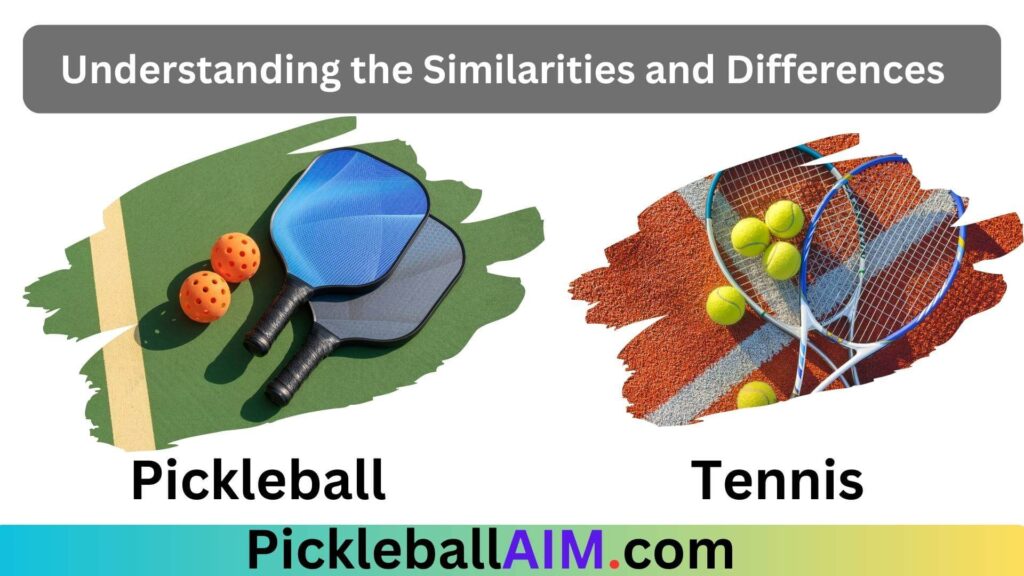
Before exploring the compatibility of pickleball and paddle tennis courts, it is essential to understand the key similarities and differences between the two sports.
Court Dimensions
Paddle Tennis: A standard paddle tennis court measures 50 feet in length and 20 feet in width. It has a service box that extends 21 feet from the baseline. The net height is similar to a tennis court, typically around 31 inches at the center.
Pickleball: A standard pickleball court measures 44 feet in length and 20 feet in width. It features a non-volley zone (NVZ) or “kitchen” area that extends 7 feet from the net on both sides. The net height is 36 inches at the center and 34 inches at the sidelines.
Equipment
Paddle Tennis: Paddle tennis is played with solid paddles made of materials like wood, composite, or other durable materials. The ball used is a depressurized tennis ball, specifically designed for the sport.
Pickleball: Pickleball uses solid paddles made of materials like wood, composite, or graphite. The ball used is a plastic ball with holes, often referred to as a pickleball. The unique ball design contributes to the slower pace and control-oriented nature of the game.
Gameplay
Paddle Tennis: Paddle tennis2[Paddle tennis is a racket sport played on a smaller court with solid paddles and a depressurized tennis ball, offering fast-paced, enjoyable gameplay.] involves serving underhand, and players must allow the ball to bounce before returning it. Volleys (hitting the ball in the air without letting it bounce) are permitted throughout the game.
Pickleball: Pickleball also features an underhand serve, but the receiving team must let the ball bounce once before volleys are allowed. The non-volley zone (NVZ) adds an extra layer of strategy, as players are prohibited from volleying the ball while standing inside this area.
Can You Play Pickleball on a Paddle Tennis Court?
With the similarities and differences in mind, the question remains: Can you play pickleball on a paddle tennis court? The answer is yes, it is possible, but some adaptations and considerations are necessary.
1. Adjusting the Net Height
To play pickleball on a paddle tennis court, the net height must be adjusted. A standard pickleball net is 36 inches high at the center, which is higher than the net used in paddle tennis. If the existing net is not adjustable, players can use a portable pickleball net or find a suitable solution to set up the correct net height.
2. Adhering to the Non-Volley Zone (NVZ) Rule
In pickleball, the non-volley zone3[Non volleys allowed in the designated area near the net, adding strategic depth to pickleball gameplay.] is a critical element that adds strategic complexity to the game. It is a seven-foot area on both sides of the net where players are not allowed to volley the ball (hit it in the air without letting it bounce). While playing pickleball on a paddle tennis court, players can still follow the NVZ rule by mentally marking the 7-foot area on each side of the net and adhering to it during play.
3. Using Pickleball Equipment
To play pickleball on a paddle tennis court, participants should use pickleball paddles and pickleballs. The depressurized tennis balls used in paddle tennis are not suitable for pickleball, as they lack the necessary bounce and characteristics of a standard pickleball.
4. Communication and Understanding
If players from both sports are sharing a court, clear communication and understanding of the adapted rules are essential. Players accustomed to paddle tennis should be made aware of the NVZ rule and the adjusted net height for pickleball play. This will ensure a smooth and enjoyable experience for all participants.
Advantages of Playing Pickleball on a Paddle Tennis Court
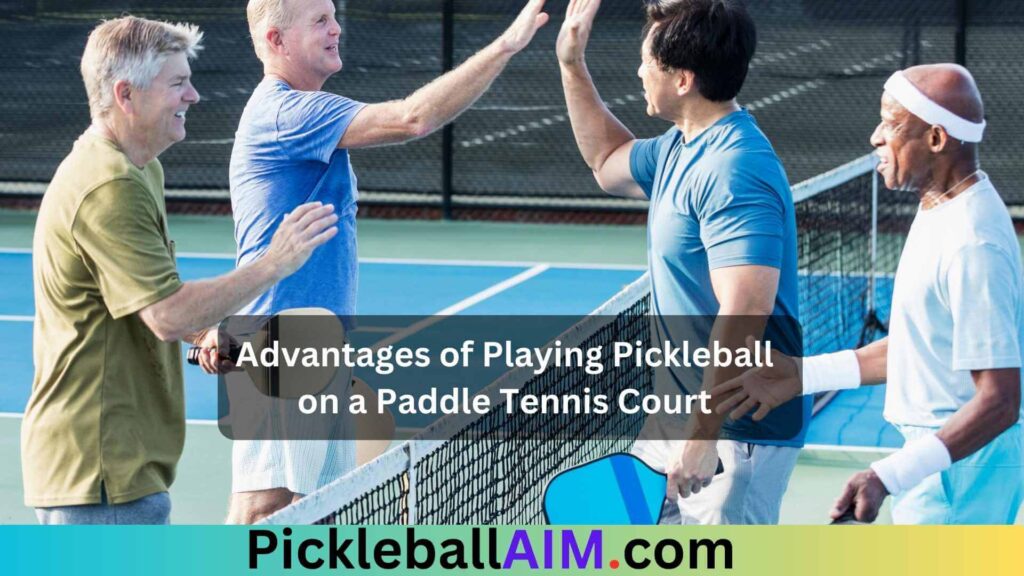
While playing pickleball on a paddle tennis court requires some adaptations, it also brings about several advantages and benefits for players. Let’s explore these advantages that make the fusion of both sports an exciting and enjoyable experience.
1. Availability of Courts
One significant advantage of playing pickleball on a paddle tennis court is the increased availability of facilities. Paddle tennis courts are relatively common, especially in certain regions where the sport is more popular. By utilizing existing paddle tennis courts for pickleball play, players can enjoy the game without the need to construct dedicated pickleball courts. This expanded accessibility can contribute to the growth of pickleball in areas where dedicated courts might not be readily available.
2. Diverse Player Interaction
Playing pickleball on a paddle tennis court can foster a unique and diverse player interaction. Paddle tennis enthusiasts and pickleball players can come together to share the court and enjoy each other’s sports. This cross-sport interaction not only builds camaraderie but also provides an opportunity for players to learn from one another. Those familiar with paddle tennis can gain insights into pickleball strategies, while pickleball players can appreciate the nuances of paddle tennis gameplay.
3. Physical and Mental Challenge
The fusion of pickleball and paddle tennis creates a unique and challenging experience for players. The slightly larger court dimensions of paddle tennis may require pickleball players to cover more ground and adapt their positioning and movement. Similarly, paddle tennis players might need to adjust to the rules of the non-volley zone and the use of pickleball paddles and balls. This fusion of rules and gameplay can lead to a fun and mentally stimulating challenge for all participants.
4. Enhanced Strategic Play
Combining the elements of both sports can lead to enhanced strategic play on the court. Paddle tennis players accustomed to volleys and faster-paced rallies may need to adapt their shots and tactics to accommodate the slower pace and control-oriented nature of pickleball. At the same time, pickleball players can explore how to utilize paddle tennis court dimensions4[A standard tennis court measures 78 feet (23.77 meters) in length and 27 feet (8.23 meters) in width for singles matches. For doubles matches, the width increases to 36 feet (10.97 meters). The net is positioned 3 feet (0.914 meters) high at the center and is supported by posts placed 3.5 feet (1.07 meters) outside the court boundaries.] to their advantage, making creative use of angles and shot placement. This blend of strategic thinking from both sports can result in engaging and dynamic gameplay.
5. Versatility in Player Numbers
Paddle tennis courts often accommodate four players per game, making it suitable for doubles play, similar to pickleball. By combining both sports, larger groups of players can participate together, enjoying friendly doubles matches. This versatility in player numbers allows for a more inclusive and social playing environment.
Conclusion
In conclusion, playing pickleball on a paddle tennis court offers a fantastic opportunity for players to embrace the fusion of both sports. With a few simple adaptations and clear communication between players, enthusiasts can enjoy the advantages of utilizing existing paddle tennis courts for pickleball play. The shared experience of diverse player interaction, enhanced strategic play, and the ability to accommodate larger groups on the court make playing pickleball on a paddle tennis court an exciting and enjoyable prospect for all racket sports enthusiasts. So, whether you are a seasoned paddle tennis player or a passionate pickleball player, don’t hesitate to explore the possibilities and experience the thrill of this unique combination on the court.
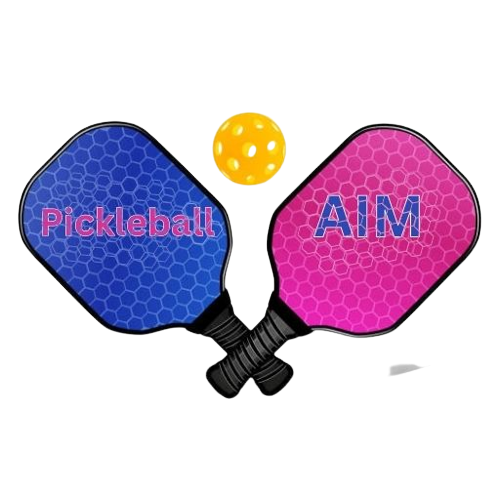
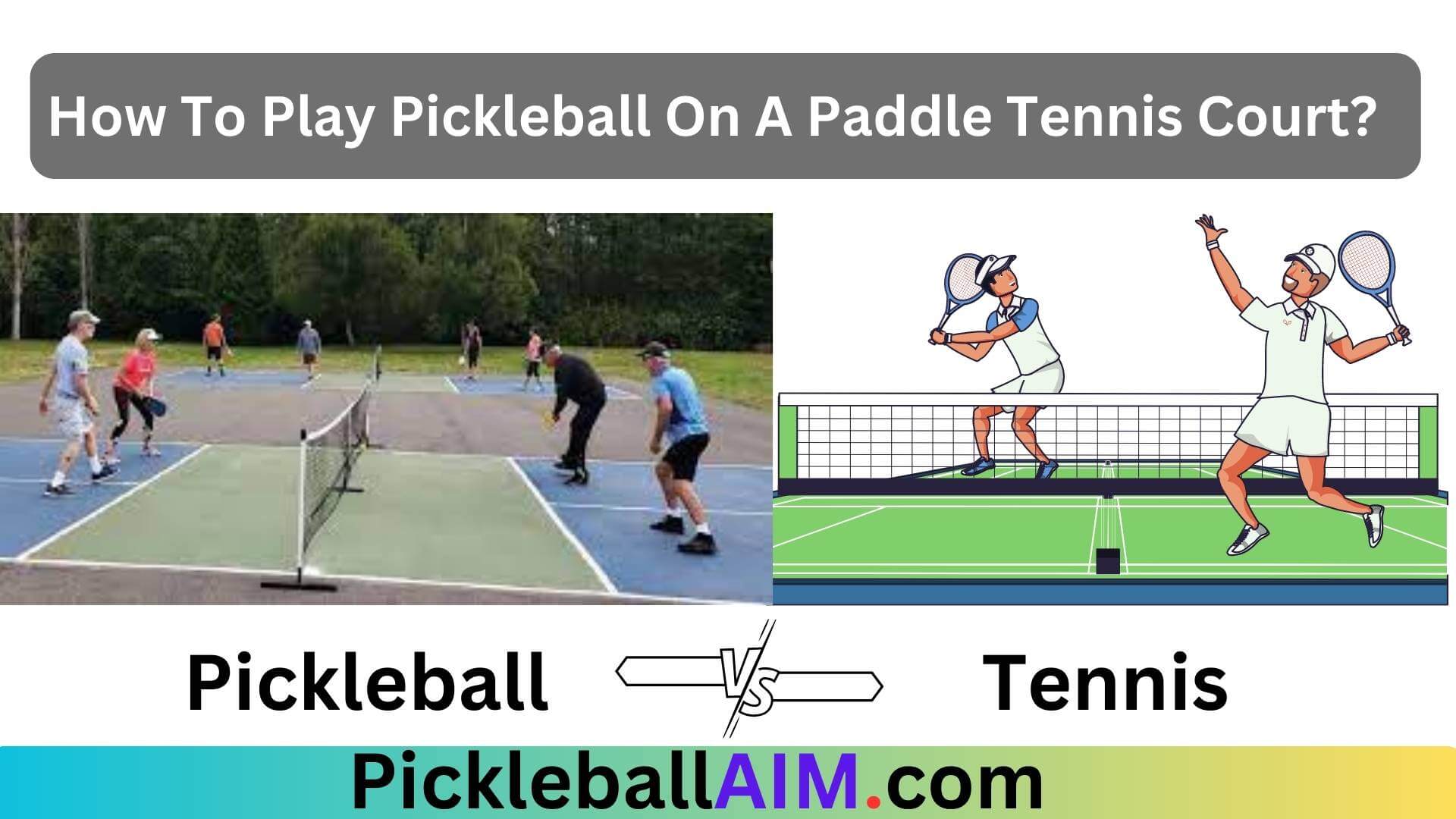
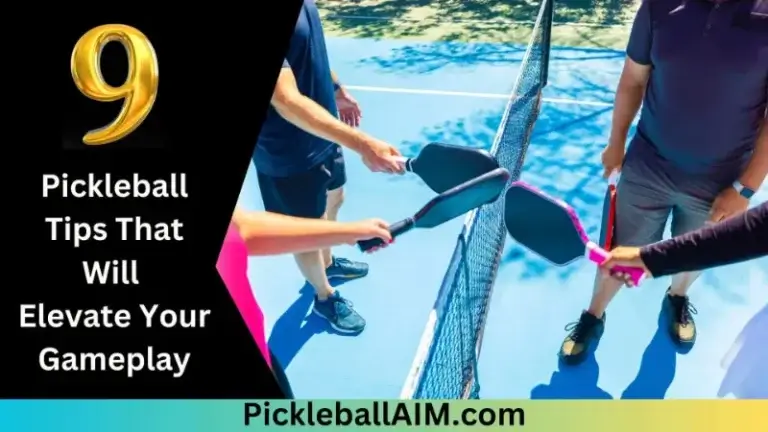

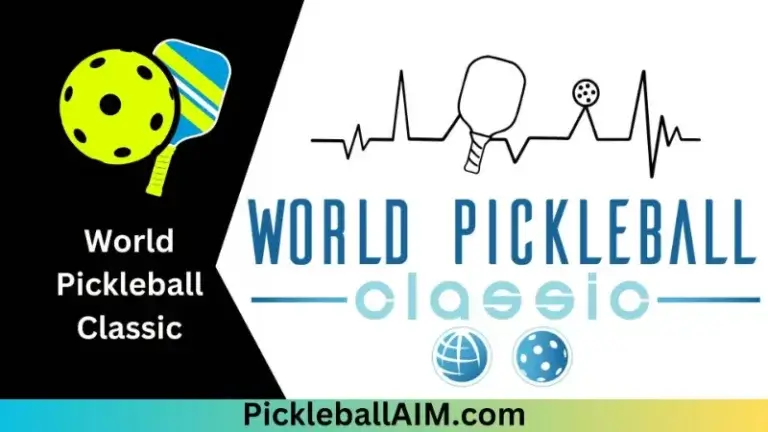
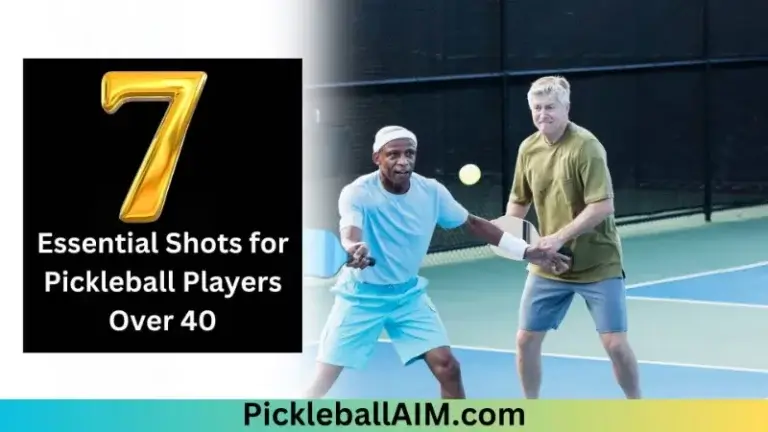
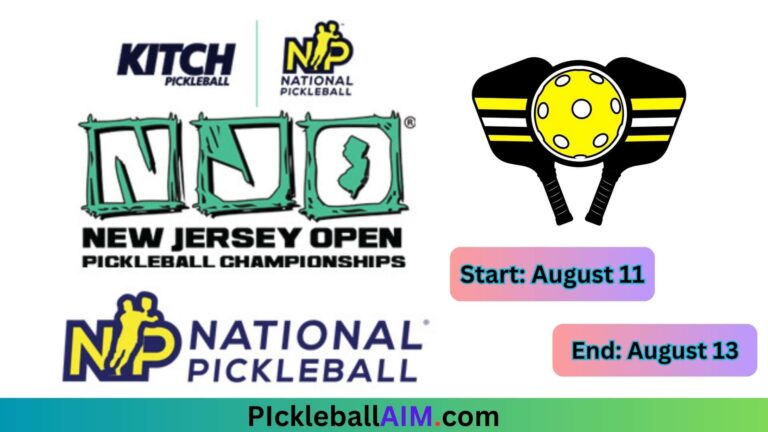
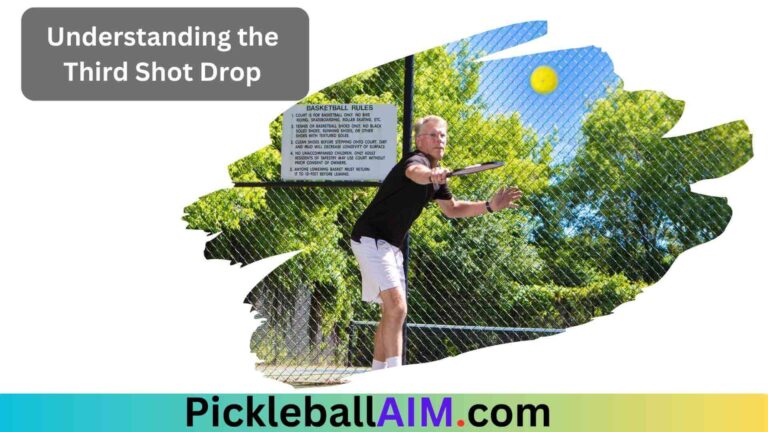
3 Comments